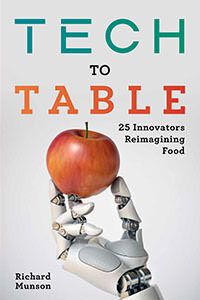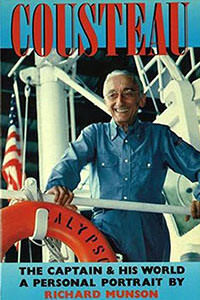Printing 3D Meals: The New Kitchen Appliance that Reinvents Our Culinary Options

Foodini—Printing 3D Meals
Remember Star Trek’s Replicator, the fantasy machine that synthesized meals on demand? Today, 3-D food printers seem to be turning this science fiction into reality.
The U.S. space agency, in fact, uses these modern appliances to feed astronauts on long-distance missions. Since space travelers clamor for something tasty to supplement their food pills and freeze-dried meals, NASA in 2013 developed the Chef3D that prints a pizza with layered dough, tomato sauce, cheese, and spices. To cut waste and save space, astronauts rehydrate powered ingredients and program the printer to create their desired feel, appearance, and consistency. Russian cosmonauts in 2019 printed cultured meat at the International Space Station by feeding stem cells from a cow into a 3-D printer.
Industrial engineers began designing 3-D printers in the 1980s, but the focus on food is relatively new. In what is called additive manufacturing, those early machines extruded layers of plastics to form toys, jewelry, and prosthetics. About a decade later, they laid down and laser-melted metal to make tools and precision parts. A market research firm estimates 3-D printing will grow 26.4 percent annually between 2020 and 2024, becoming a $40-billion industry by 2024.
Students at Cornell University in 2006 developed the first food printers, not surprisingly to make cookie dough and cheese crackers. Hershey’s in 2014 worked with start-up 3D Systems to pattern various shapes for dark, milk, and white chocolate.
Lynette Kucsma—a co-founder of Natural Machines—argues that food-focused 3-D printers will become as ubiquitous as microwaves, the last significant advancement in kitchen equipment. “It took thirty years after microwaves went into the consumer market to get 90-percent market penetration,” says Kucsma. “We see that being halved for a 3-D food printer just because technology’s advanced a lot, so we’re a much more tech-savvy audience, and plus we can build things out a lot faster. Our big vision is that in ten to fifteen years, 3-D food printers will become a common kitchen appliance like an oven or a stove is in today’s kitchen, both professional and home kitchen use.”
Kucsma co-founded Natural Machines in 2012 with Emilio Sepulveda. “It all started with a conversation with a friend, as the idea for many other companies start,” she explains. That friend owned a vegan bakery and wanted to sell sweet goods in other countries, but the costs of shipping from a central manufacturing facility proved to be prohibitive. The pair decided the better alternative was to create small and distributed food-manufacturing machines that supply meals locally. Thus, was born the Foodini.
When it came to “printing” food, initial efforts focused more on presentation than nutrition. Natural Machines, with offices in Barcelona and New York City, began assembling sweets and snacks, particularly elaborate meringues and chocolates. Using computerized recipes, such high-tech “chefs” produced complex and colorful shapes made from sugar pastes that were not particularly tasty (or healthy) but added ornate highlights to the tops of wedding cakes and cookies.
Yet Kucsma, who describes herself as health focused, soon shifted her focus to fresh ingredients and more nutritious offerings. Maintaining that eating well improves a person physically, emotionally, and intellectually, she argues that Foodini allows individuals the flexibility to personalize individual meals and diets.
The Foodini, which measures about 4.7 inches high and weighs about 20 pounds, lays down layers of ingredients from five reusable stainless-steel containers according to recipes devised or stored within its computer. The machine takes natural ingredients—be they in the form of a paste, gel, or liquid—to print a multitude of mixtures, including batters, jams, and pasta. To make ravioli, for instance, the machine first prints a layer of pasta, then adds a layer of filling, and then covers it with another layer of pasta. It is the same process a cook uses to make ravioli by hand, but Foodini automates it, leaves less mess in the kitchen, and enables creative shapes, varying ingredients, and different sizes.
One agricultural-economics professor compares food printers to color printers, which use three base colors—red, green, and blue—to produce virtually every hue we see. “Similarly,” he says, “3-D food printers eventually might use only a handful of base flavors that, when mixed in various combinations, create a myriad of familiar, and unfamiliar, flavors and textures.”
The meal-assembly machine comes with a variety of nozzles to deliver diverse textures. The smallest lays down a thin layer of 0.02 inches, which is hard for human chefs to obtain with knives or slicers. The machine’s touch screen (as well as any linked smart phone, tablet, or laptop) allows access to a library filled with thousands of recipes and shapes; select one and the printing begins. The newer models—which now appear in gourmet restaurants, smart kitchens, and bakeries—make ravioli, couscous, spinach quiche, crackers, pretzels, chocolate, chicken nuggets, and burgers.
Cooks can fill the Foodini’s stainless steel capsules with their own basic ingredients, pre-filled cartridges, or packaged sets of ingredients for a specific recipe. Chefs on their way home might stop at a supermarket’s deli counter to pick up sets of fresh fillings and diverse doughs.
Lasers within some 3-D appliances cook the food while it is being printing. Those concentrated beams, unlike microwaves, direct heat precisely and adjust to the needs of different ingredients. A blue laser, for instance, penetrates the food while an infrared light browns the surface; combined, they achieve the desired temperature, texture, and cooking speed. Another option is to flash-cook or cool the mixtures within the printing chamber.
Natural Machines initially targets food professionals, including restaurant and hotel chefs, bakers, and deli workers. By the end of 2021, the startup plans to launch a new home-kitchen-focused version with its patented laser cooking technology. “As Foodini is a completely new apparatus,” says Sepulveda, “we found little value on using the traditional distribution chains, so we are focusing on marketing it ourselves.”
The entrepreneurs claim 3-D printing enables chefs “to reinvent our culinary ways,” and enables the customization of meals for shape, color, flavor, texture, and nutrients, thereby meeting an individual’s wants and needs. By creating meals on demand, 3-D printing reduces food waste and inventories, and through sophisticated software, it may empower more people to cook their own fresh meals.
More on Lynette Kucma, Emilio Sepulveda, 3-D Food Printing, and other food and farm innovations, can be found in Tech to Table: 25 Innovators Reimagining Food.










